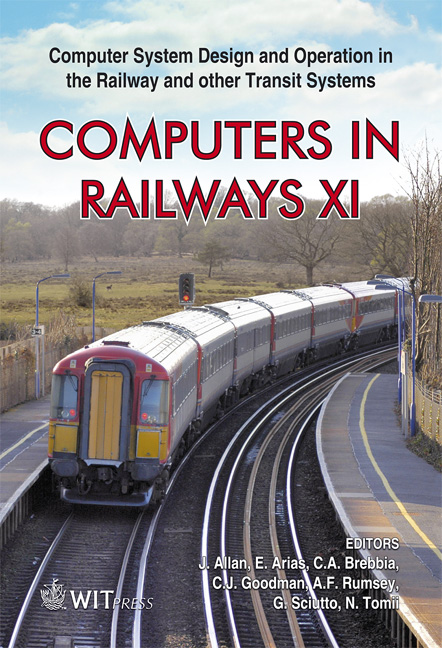Measurement Of Vehicle Ground Speed With Inertia Sensors – Computation Issues
Price
Free (open access)
Transaction
Volume
103
Pages
10
Page Range
777 - 786
Published
2008
Size
411 kb
Paper DOI
10.2495/CR080751
Copyright
WIT Press
Author(s)
T. X. Mei & H. Li
Abstract
This paper proposes a new method for the measurement of train speed using bogie mounted inertial sensors, which may achieve a measurement accuracy far better than what is specified in UIC-5014-05 for wheel slide control. The proposed method measures the speed from a time shift between the dynamic motions of two wheelsets which are derived from the responses of a railway bogie to track excitations, in particular track irregularities that always exist in rail tracks. Two inertial sensors will be required and mounted onto a bogie frame to measure the bounce and pitch accelerations (or lateral and yaw accelerations). The measured signals will be processed via dedicated filters to produce estimated wheelset movements (i.e. the track irregularities). The principle of the proposed method will be presented, but the paper will be mainly focussed on the assessment of computational demand and impact on measurement performance. Keywords: vehicle ground speed, indirect measurement, inertia sensors. 1 Introduction The absolute speed of trains is one of essential parameters in railway operations and also essential for modern traction and braking control systems. Conventionally, the vehicle speed is measured indirectly from the rotational speed of wheels using encoders [5]. However the measurement accuracy of the technique is compromised by changes in wheel radius (due to wear, or lateral movement of the wheels) and limited resolution of the encoders acceptable for rail applications, but more critically the measurement may become completely unacceptable when wheel slip or slide occurs in acceleration (under traction) and deceleration (in braking) operation modes. A number of alternative
Keywords
vehicle ground speed, indirect measurement, inertia sensors.





